Beirut explosion: Before and after pictures show extent of damage
Death toll rises to 135 on Wednesday
Your support helps us to tell the story
From reproductive rights to climate change to Big Tech, The Independent is on the ground when the story is developing. Whether it's investigating the financials of Elon Musk's pro-Trump PAC or producing our latest documentary, 'The A Word', which shines a light on the American women fighting for reproductive rights, we know how important it is to parse out the facts from the messaging.
At such a critical moment in US history, we need reporters on the ground. Your donation allows us to keep sending journalists to speak to both sides of the story.
The Independent is trusted by Americans across the entire political spectrum. And unlike many other quality news outlets, we choose not to lock Americans out of our reporting and analysis with paywalls. We believe quality journalism should be available to everyone, paid for by those who can afford it.
Your support makes all the difference.Lebanon is reeling after a massive explosion tore through Beirut on Tuesday, killing at least 135 people and injuring 5,000 others.
The blast flattened many of the city’s buildings and damaged countless others.
The incident is thought to have been caused by a fire detonating 2,750 tonnes of ammonium nitrate, which was being kept in storage at a warehouse in the port.
Michel Aoun, the Lebanese president, said it was “unacceptable” for the substance to have been stored without having the appropriate safety measures in place.
While inspecting the damage, Jamal Itani, the mayor of Beirut, told Reuters: “It’s like a war zone. I’m speechless. This is a catastrophe for Beirut and Lebanon.”
Rescuers continue to dig through the rubble looking for survivors.
The following series of before and after photos shows the extent of the destruction.
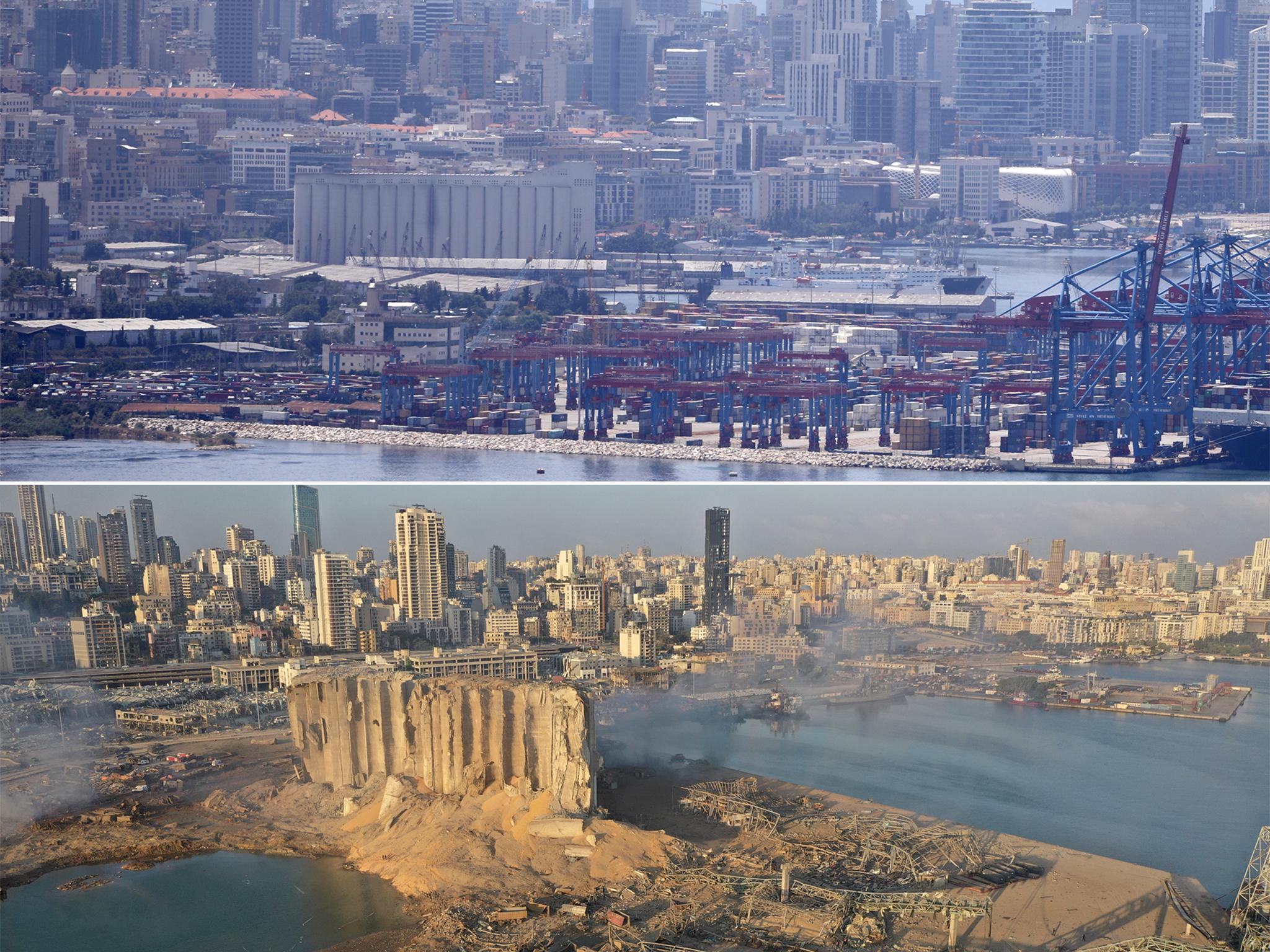
The city’s port, which is vital to the country as an entry-point for imports, was the epicentre of the explosion.
The pictures above show how most of the port was destroyed by the impact of the blast.
The infrastructure that was there before lies in tatters, while a large building near the sea has been extensively damaged.
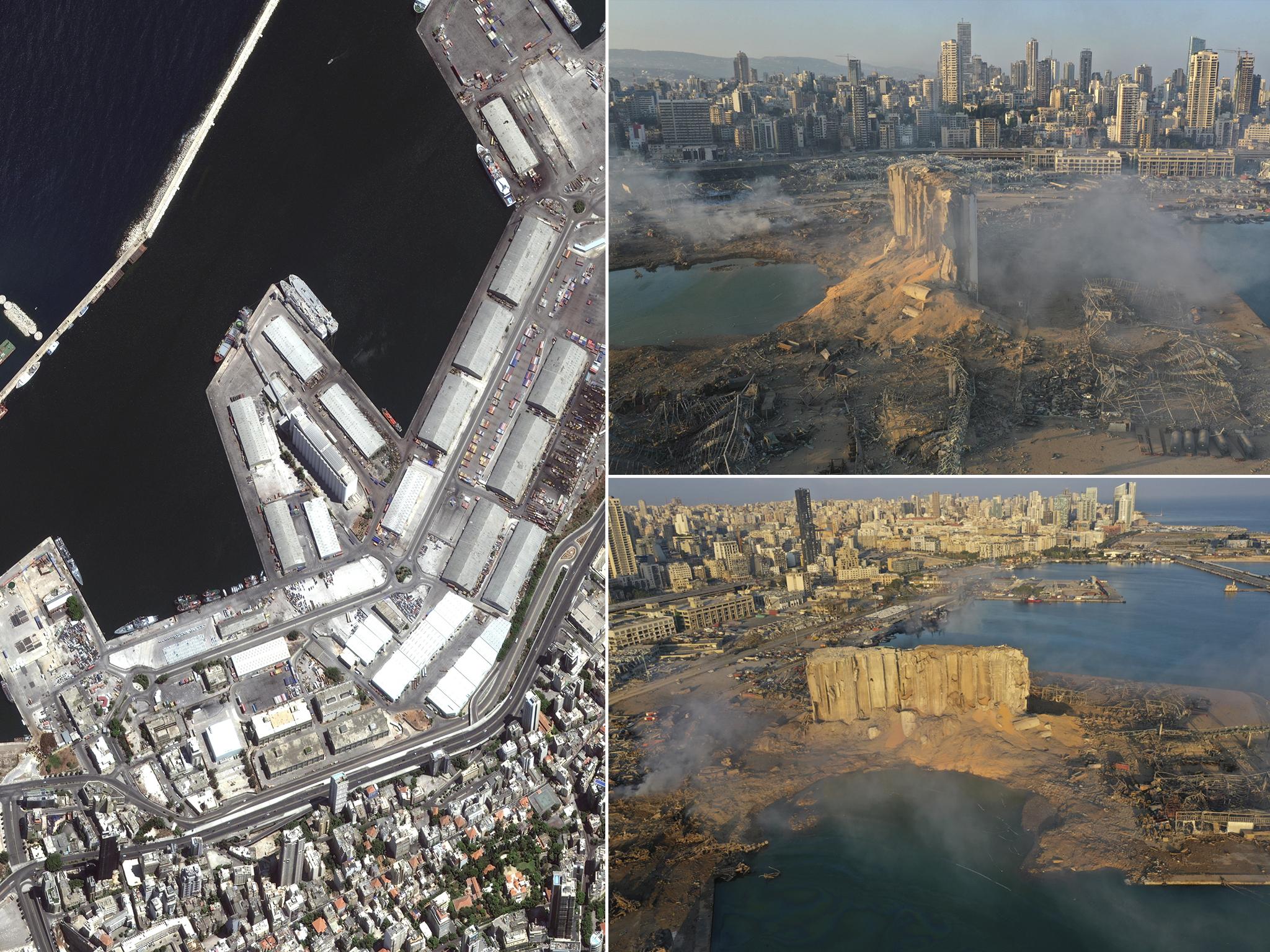
The aerial photograph on the left was taken by a satellite on 31 July, just four days before Tuesday’s incident.
The images on the right reveal that most of the buildings were flattened by the detonation.
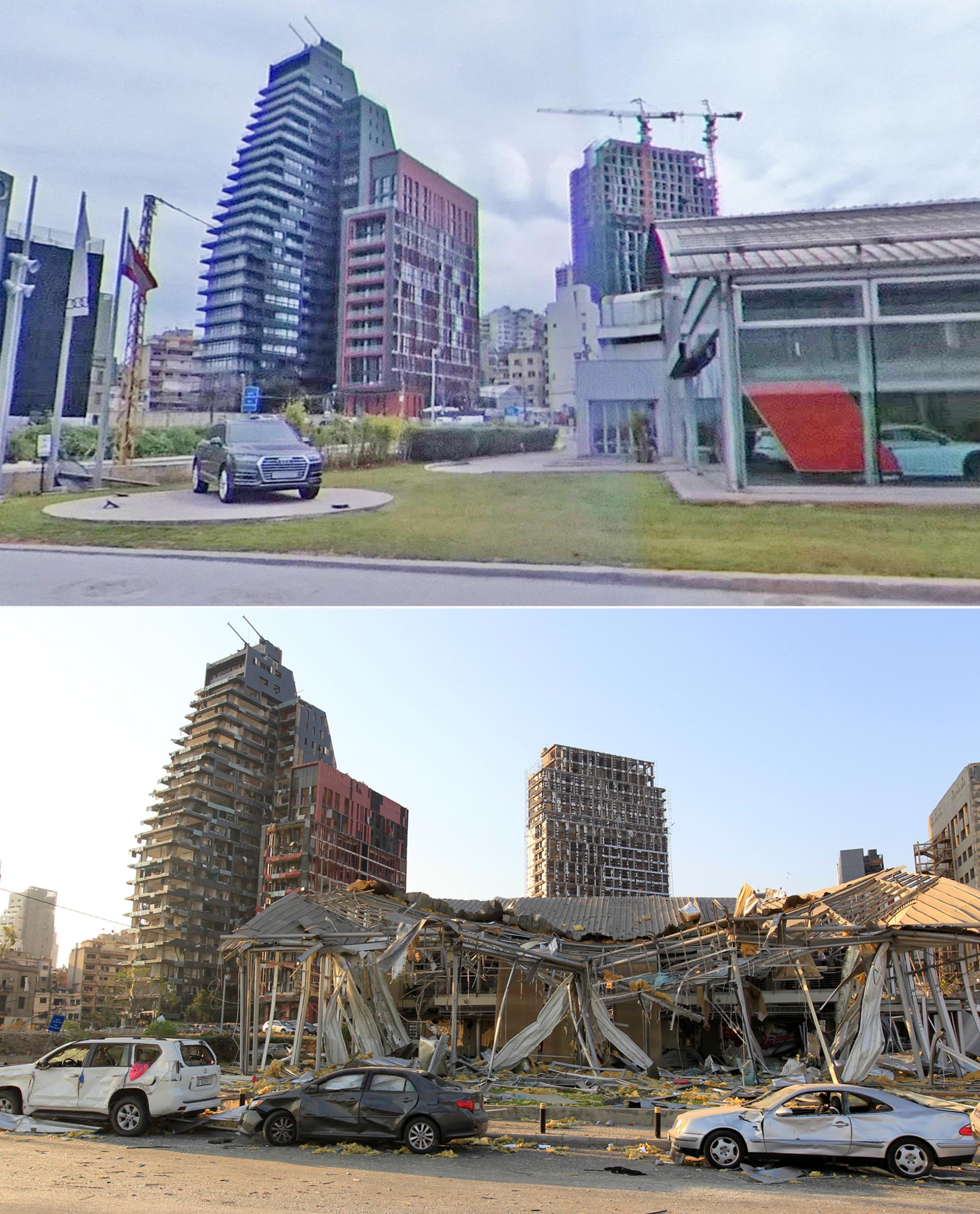
Before and after images of a car dealership, which now lies ruined near the port of Beirut.
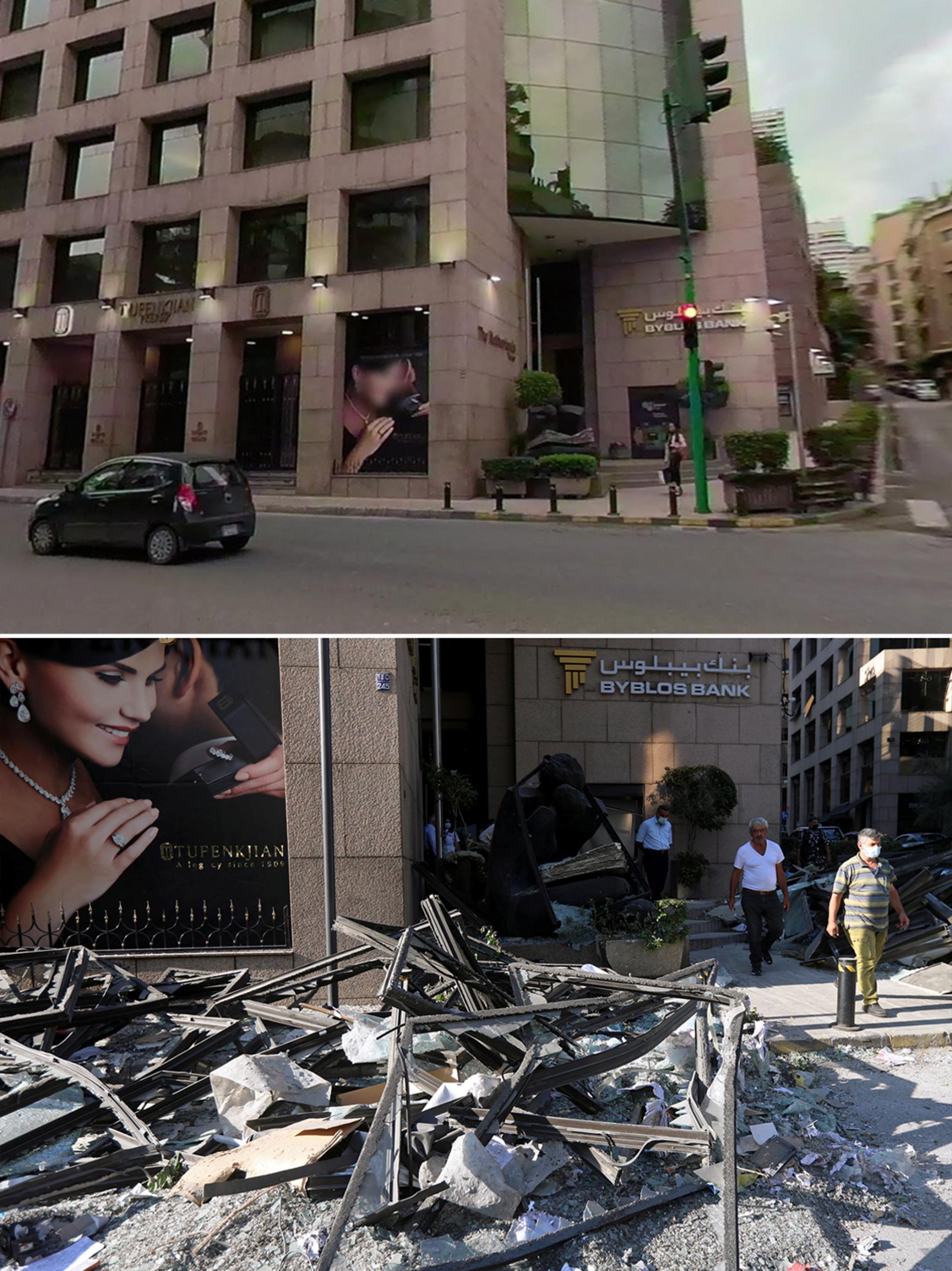
People walk past the broken windows of a Beirut bank. The damage caused on Tuesday comes on top of Lebanon’s financial woes and an increase in the number of coronavirus infections.
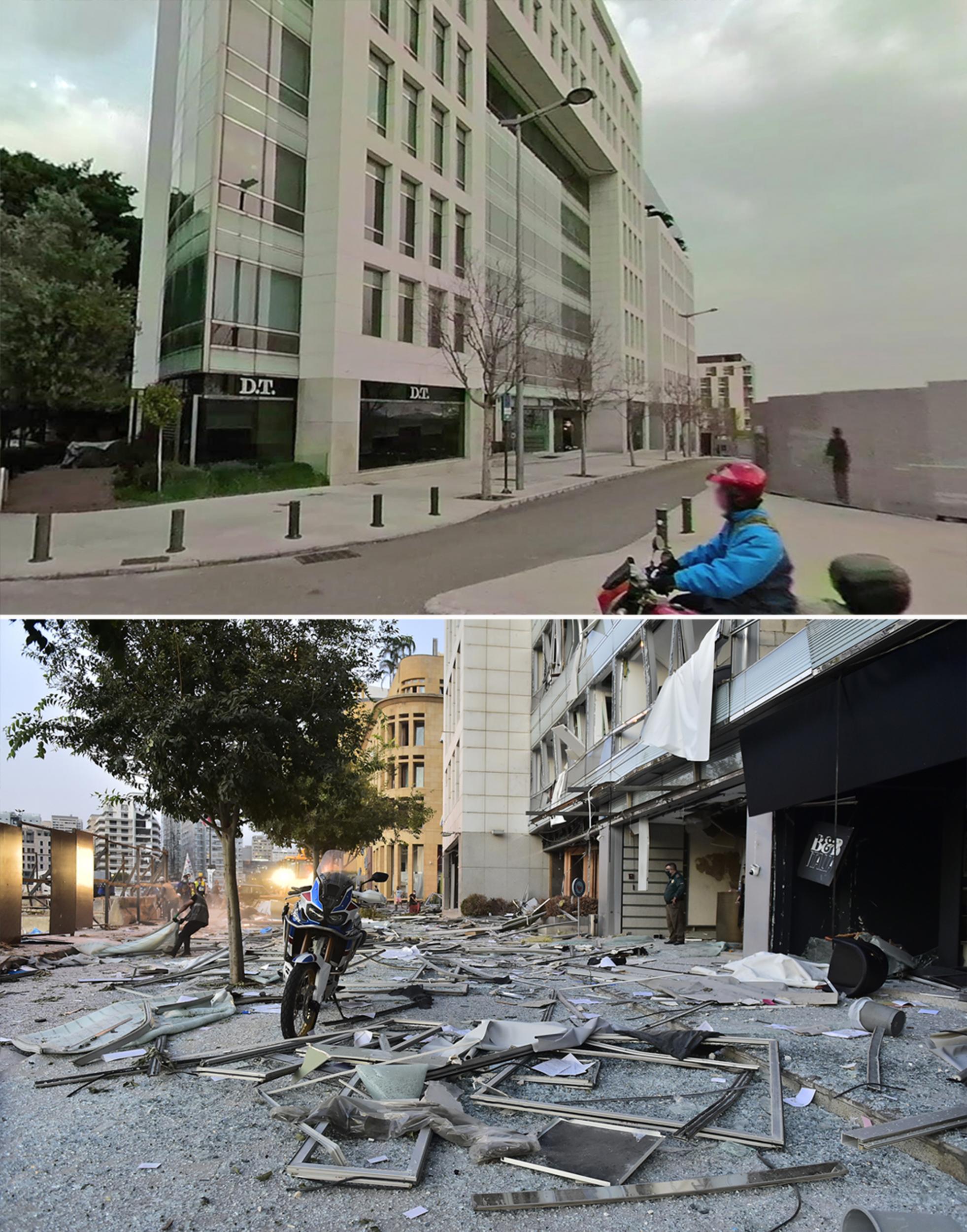
A motorbike stands amid the wreckage on a street in Beirut.
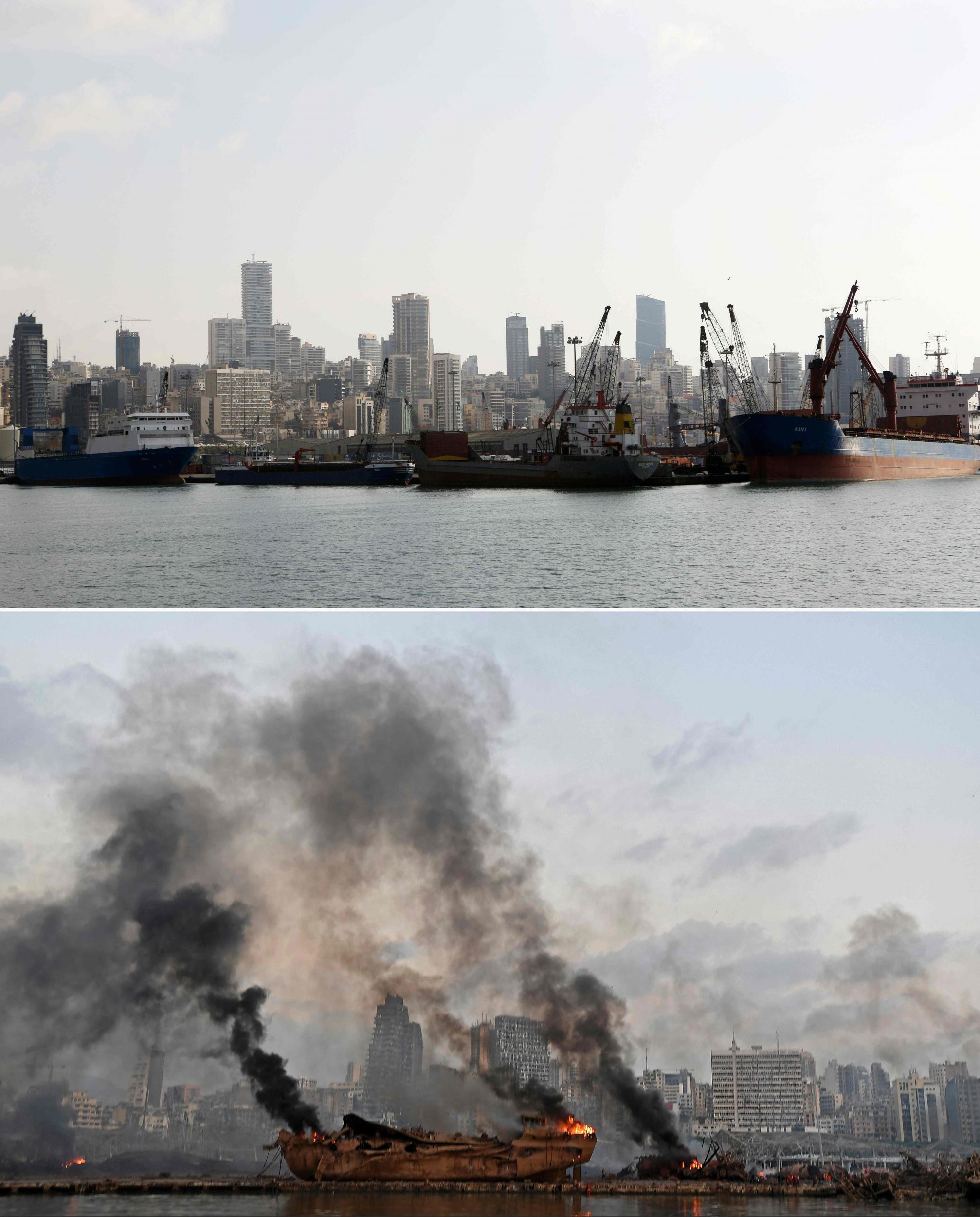
A ship is pictured on fire on Wednesday, the day after the explosion, while the image above shows the same spot in April 2017.
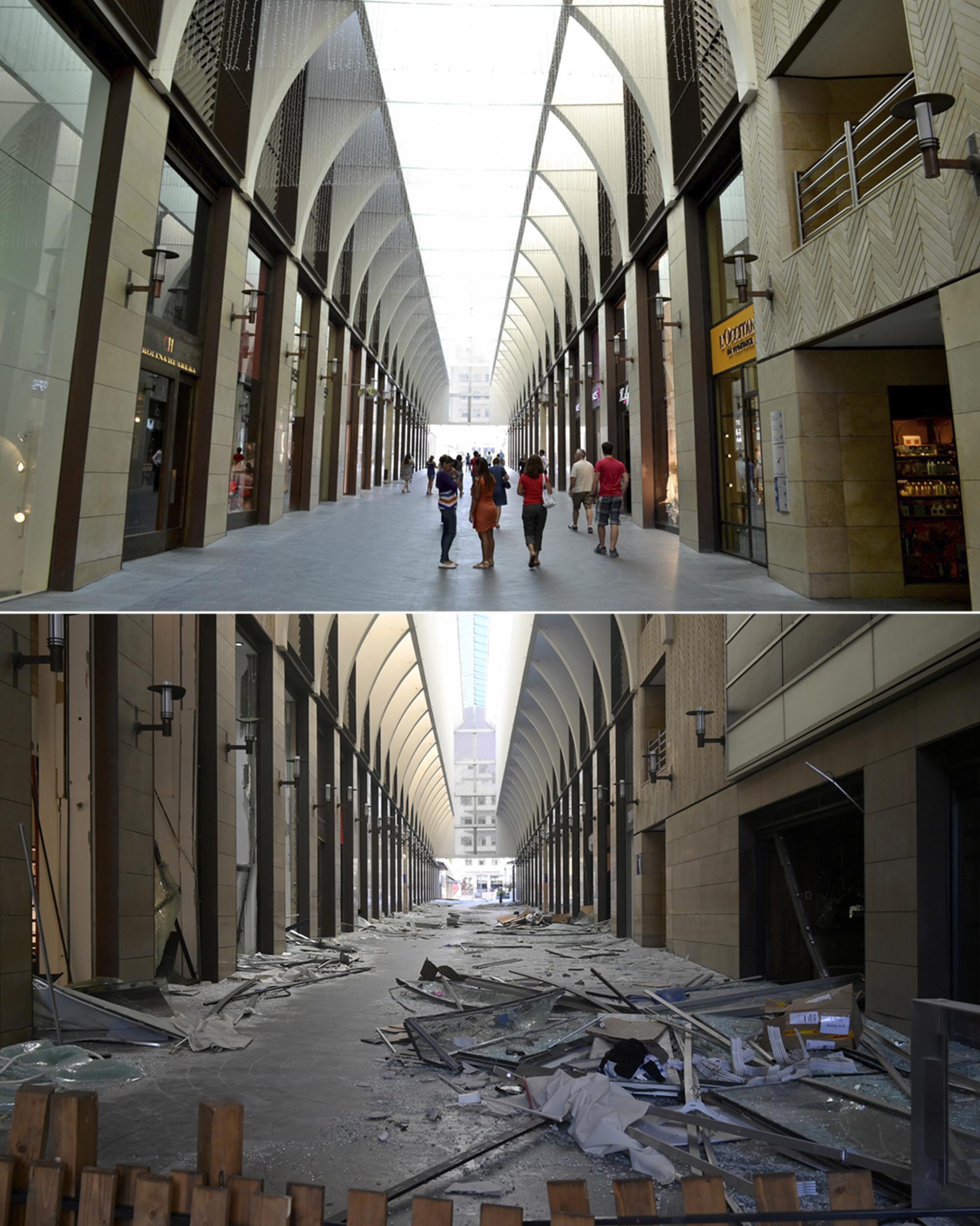
Shattered glass lies in front of the shops at Beirut Souks in the aftermath of the explosion.
The blast in the port was so intense that victims were thrown into the sea. Rescue teams are trying to recover bodies as well as look for survivors.
Many of those who died in the incident worked at the port or were driving through during rush hour.
Additional reporting from Reuters

Join our commenting forum
Join thought-provoking conversations, follow other Independent readers and see their replies
Comments